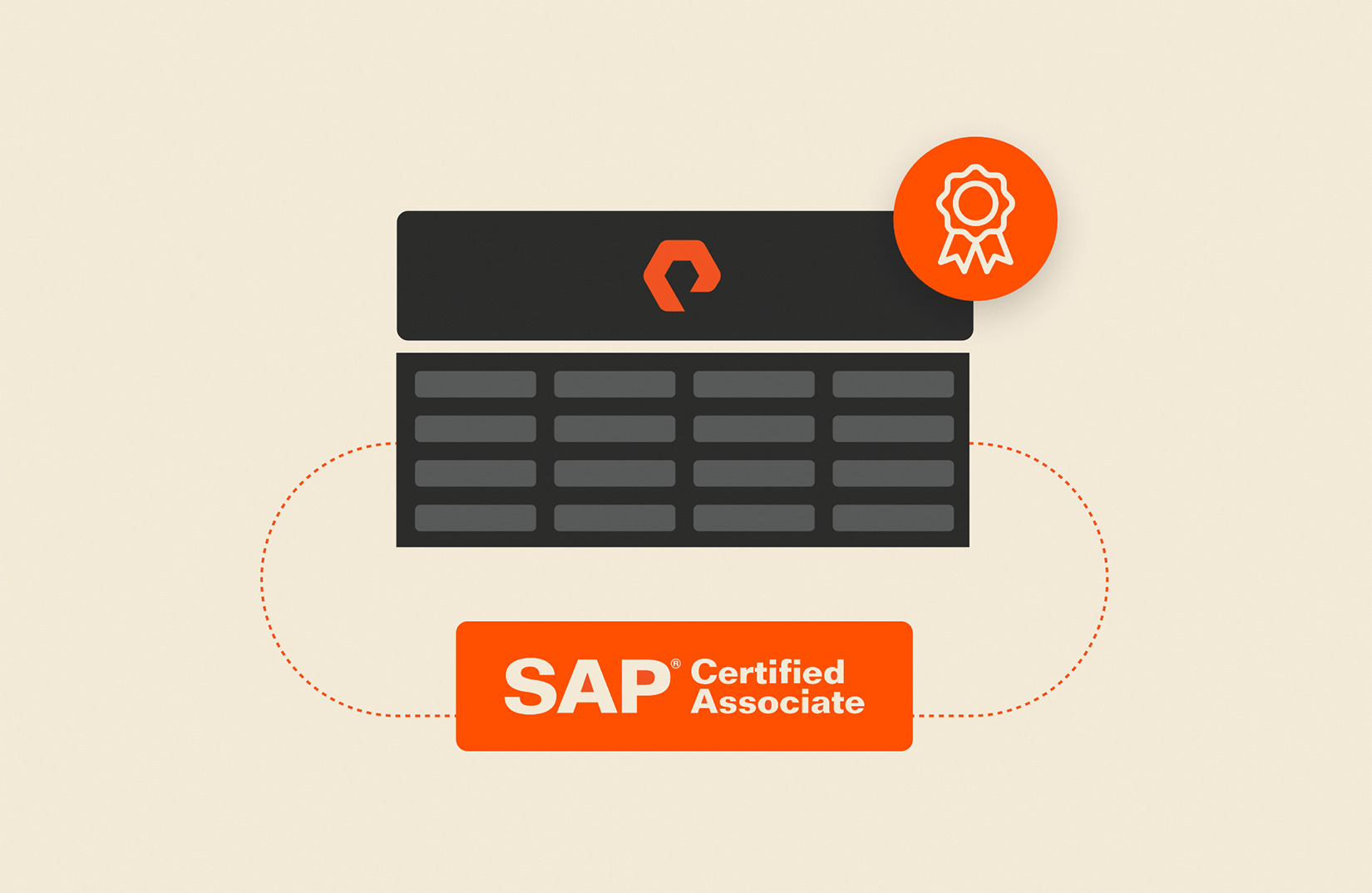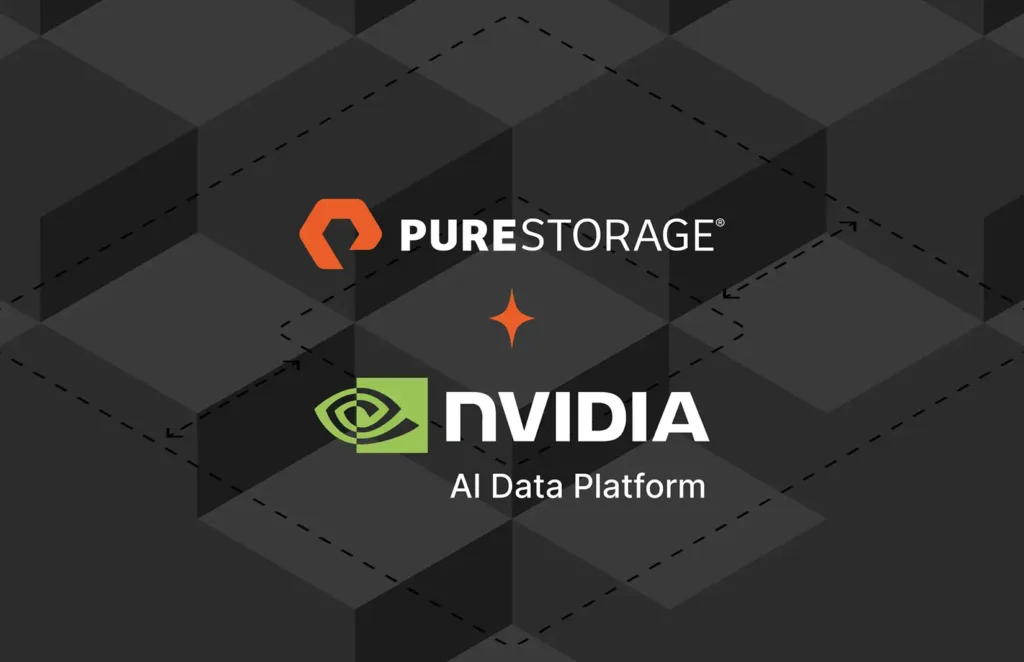SAP creates and manipulates an organization’s most sensitive customer, financial, and operational data. Managing all of that data is integral to any successful SAP environment. It underpins the reliability, accuracy, and security of information, impacting everything from day-to-day operations to strategic decision-making. So it should come as no surprise that nearly a decade ago, SAP first chose to collaborate with the leader in high-performance all-flash data management, Pure Storage.
As of the writing of this post, it has been seven years since Pure Storage and SAP partnered on the certification of FlashArray//M with Fibre Channel connectivity for SAP HANA. Since then, so much more value has been added to our all-flash platform with innovative releases such as ActiveCluster™ (active-active synchronous replication), FlashArray//X™ (the first enterprise-class all-NVMe FlashArray™), ActiveDR™ continuous replication, and FlashArray//XL™. An important milestone in the delivery of continuous storage innovation from Pure is the general availability of file services for FlashArray, providing broad support for common use cases such as database storage, content repositories, and data protection and offering a single platform for unified block and file storage.
Following on from these major milestones, I am excited to announce the certification of file services on FlashArray//X R4 for SAP HANA. This certification further extends the deployment options with FlashArray//X R4 for SAP HANA to include both Fibre Channel and Ethernet connectivity within the same storage platform.
Addressing 4 Common Customer Challenges
But a certification is only a requirements-checking exercise. The real value of FlashArray//X with SAP is in how it addresses customer challenges and needs without incurring additional cost or added complexity. The following challenges highlight how the various components of FlashArray come together to provide greater value:
Challenge #1: SAP projects are complex, time-consuming, and can be costly
Deloitte identifies five things businesses need to understand about SAP S/4HANA before implementing it. These include ensuring that they have a solid business case that considers all aspects of the implementation to get the best return on investment, that the right architecture is chosen for the business strategy, that they manage the data appropriately prior to starting the transformation, and more.
The Pure Storage® Evergreen® subscription portfolio offers unequaled choice and flexibility in how customers use and consume storage. Using FlashArray for SAP with an Evergreen subscription ensures that a cost-effective, long-term, and easy-to-use storage solution has been implemented.
Challenge #2: SAP data has a habit of growing
According to the report “Data Gravity Index (DGx)™ 2.0” by Digital Realty, data gravity is the idea that data has mass, and as its size and importance grow, it becomes increasingly difficult to manage, move, or replicate. By 2025, approximately 1.2 million exabytes of incremental enterprise data is expected to be created and utilized.
Combining the data-reducing capabilities of FlashArray with Pure1® AIOps forecasting, planning for future capacity and performance needs for an SAP deployment becomes trivial, allowing for business needs to be met in advance of unexpected growth periods.
Challenge #3: SAP data needs to be mobile
Within SAP landscapes, there is a continuous need to orchestrate and action innovation. In years past, it may have been possible to innovate on production platforms across release cycles; however, that is no longer possible. Quality assurance, development, and production systems are now separated to ensure a stable and continuous business environment. To facilitate this separation, cloning with multiple copies across multiple release cycles was implemented between the landscape elements. In its blog post, Actifio identifies five data management challenges in every SAP environment that traditional solutions for cloning are not only slow in creating full physical copies of but also require the same amount of storage as the original database, thus increasing storage costs.
The use of volume snapshots for clone/copy operations with SAP HANA landscapes eliminates the additional storage costs associated with multiple database copies and also provides for an instantaneous way in which to establish them.
Challenge #4: SAP systems are business critical
SAP systems are business-critical infrastructure, and if they are in any way affected by an outage or compromised by bad actors, there is a direct effect on business operations. Basis Technologies highlights in its blog on five hidden costs of unplanned SAP downtime that one minute of an unplanned outage costs around $9,000 on average, which is over $500,000 per hour. It also goes on to highlight additional impact on direct revenue, customer relations, brand reputation, internal influence, and project backlog.
To support business-critical operations, FlashArray has several data services that provide additional surety at the storage level. From non-disruptive storage architecture to ActiveCluster, SafeMode™ Snapshots, and beyond, FlashArray delivers additional protection to better protect the data supporting SAP business operations in the event of failures at the storage level.
Next Steps with FlashArray File Services
With organizations in the planning stages for their giant ERP upgrade projects, now is the time to take the biggest leap forward to scale your business operations and move to a platform that makes management of a critical IT asset like SAP HANA a much easier endeavor.
If you experience any of the common challenges we’ve discussed, learn how the new FlashArray//X R4 from Pure Storage can help simplify SAP operations.

BUYER’S GUIDE, 14 PAGES
Reevaluating Your Virtualization Strategy?
Explore your options in our guide to modern virtualization.

Written By:
Simplify SAP Operations
See how FlashArray//X R4 can help make management of SAP HANA a much easier endeavor.






